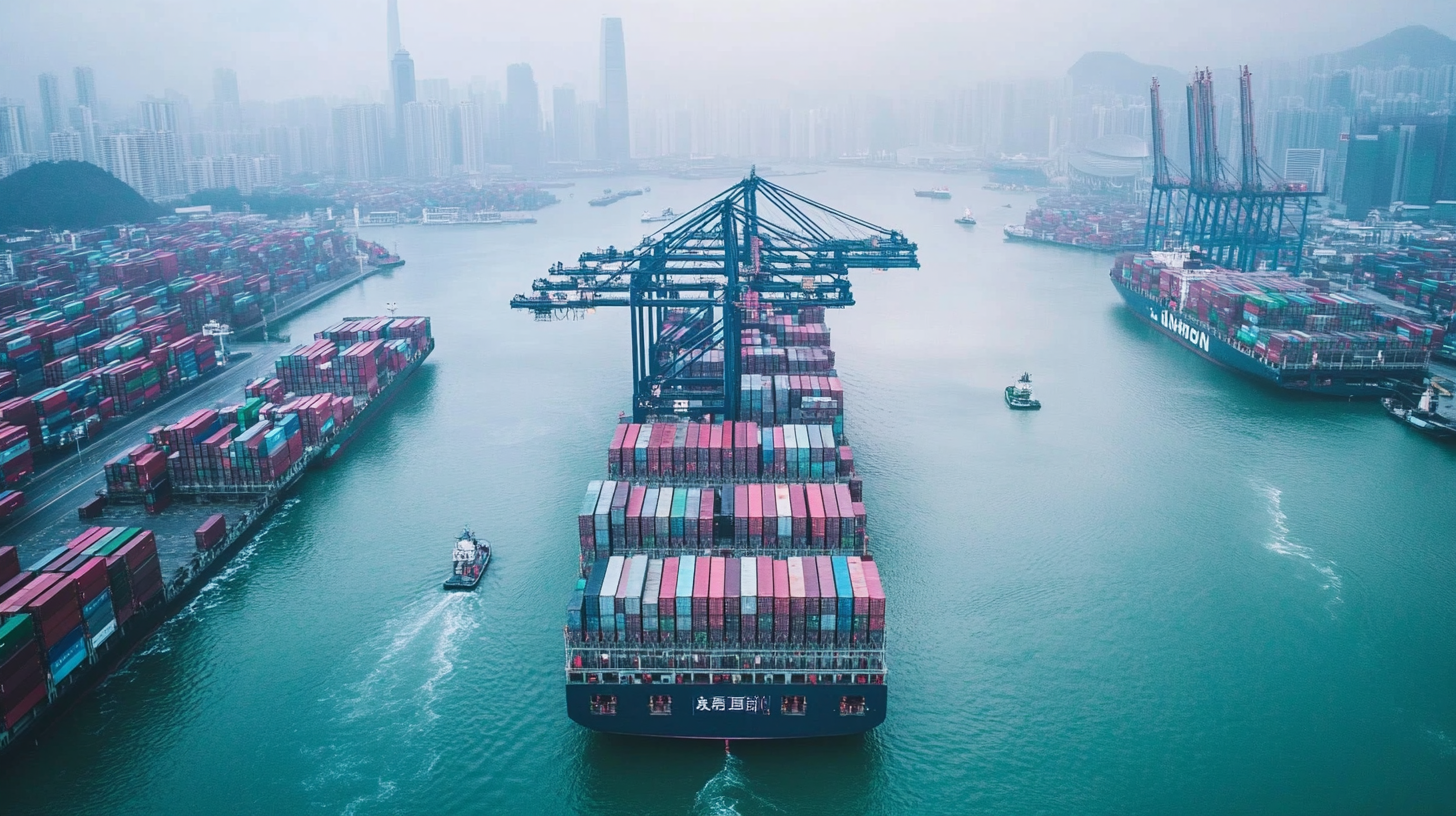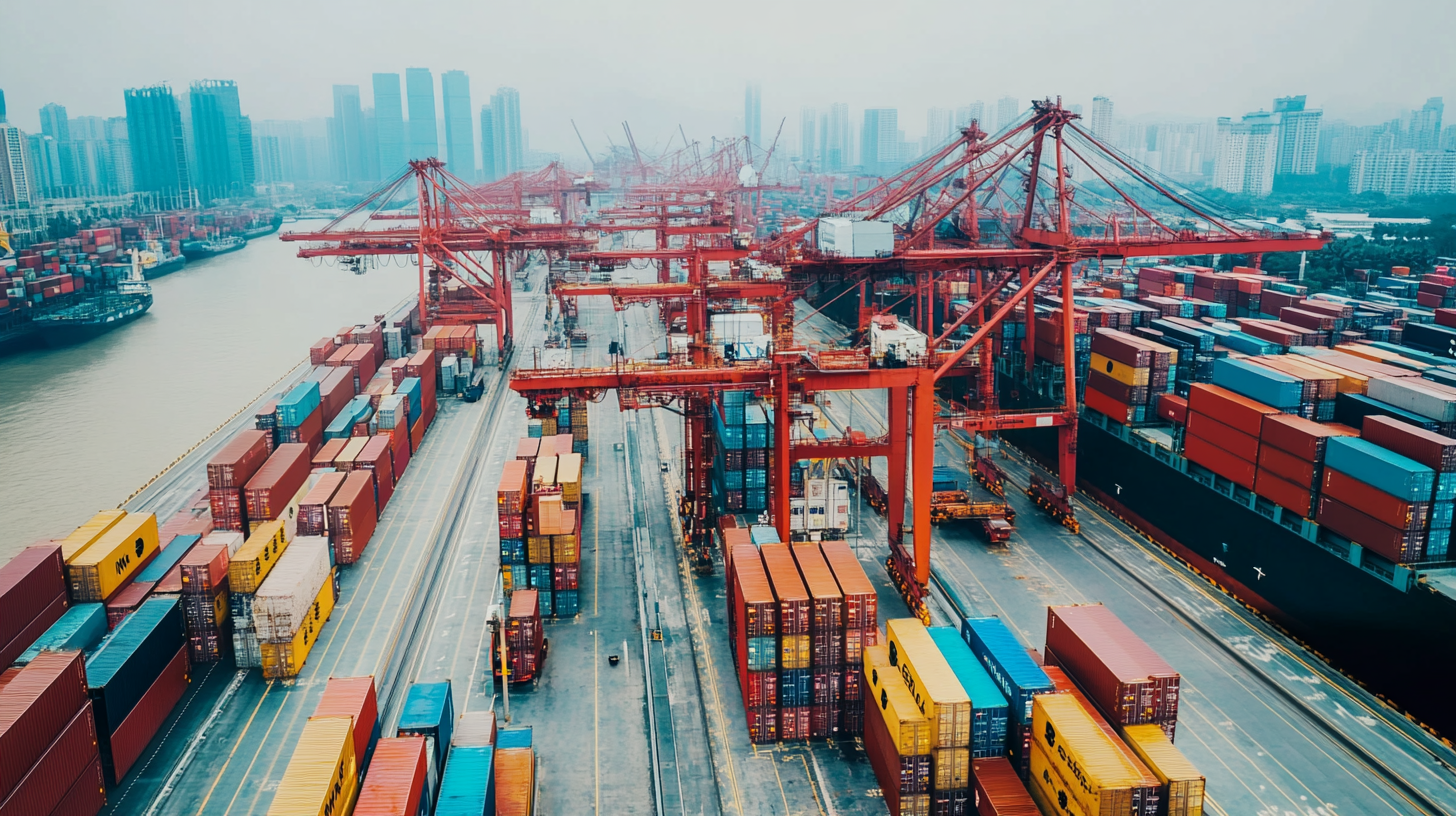
- hasivo@hasivo.com
- Mon - Sat at 7:00AM to 9:00PM
Leave Your Message

In the face of escalating tariffs and trade tensions between the U.S. and China, the landscape for technology manufacturers has become increasingly complex. Notably, the market for 10G switches has shown remarkable resilience, with China's top manufacturers defying the odds to achieve significant growth. According to recent industry reports, the global market for 10G Ethernet switches is projected to reach over $3 billion by 2025, driven by the growing demand for high-speed data transmission and the expansion of cloud computing. In this challenging environment, leading Chinese manufacturers have adopted innovative strategies to enhance their competitive edge, such as investing in R&D and optimizing supply chains. This blog will explore how these top companies navigate tariff challenges and continue to thrive, showcasing their agility and forward-thinking approaches in the dynamic tech market.

Amid increasing tariff challenges imposed by the U.S., China's 10G switch manufacturers are adopting proactive strategies to navigate these tumultuous waters. A recent report indicated that since January, tariffs on all imported goods from China have surged by 20%, with projections from analysts suggesting a potential increase of up to 34%. This rapidly shifting landscape has forced manufacturers to rethink their approach to international trade and product sourcing.
One effective strategy some manufacturers are employing is diversifying their supply chains and exploring markets beyond the U.S. This approach not only mitigates the impact of tariffs but also aligns with broader trends in global trade dynamics. Companies are also investing in technology and compliance measures to ensure that their products meet foreign market standards, thus avoiding additional costs associated with non-compliance. Furthermore, leveraging AI to predict market shifts and consumer trends can provide critical insights that enhance decision-making processes in real-time.
To thrive in this challenging environment, these manufacturers are focusing on strategic product selection and compliance. By anticipating changes in trade policies and adapting their product offerings accordingly, they are positioning themselves not just to survive but to excel, despite the volatile tariff climate. The ability to be agile is more crucial than ever, as evidenced by fluctuations in the market and investor sentiment during this prolonged trade conflict.
In the competitive landscape of networking equipment, China's top 10G switch manufacturers are leveraging innovative technologies to navigate tariff challenges and push forward their growth trajectories. With the global technology industry set for significant expansion in 2025, fueled by increased IT spending and a surge in AI investments, these manufacturers are strategically aligning themselves with the burgeoning demand for advanced networking solutions. Their focus on innovation not only helps them mitigate external pressures, such as tariffs and geopolitical tensions but also positions them as leaders in the integration of cutting-edge technologies with industrial practices.
Moreover, China’s ongoing commitment to promoting "new quality productive forces" plays a crucial role in this evolution. By fostering an environment that emphasizes technological breakthroughs and industrial enhancement, Chinese manufacturers are redefining standards in the networking sector. The drive to integrate state-of-the-art technologies into their products is essential not just for catering to domestic needs, but also for expanding their influence in global markets. As the telecom industry gradually recovers and grows, these manufacturers are poised to capitalize on opportunities presented by advancements like 5G, ensuring they remain at the forefront of innovation and industry leadership.

As China’s top 10G switch manufacturers navigate the complexities posed by tariffs, they are learning to balance quality and cost effectively. The recent emphasis on reshoring manufacturing presents both opportunities and hurdles for these producers. By adapting to evolving tariffs and trade policies, they’re not only ensuring compliance but also fostering innovation to maintain their market relevance.
Tip: Streamlining supply chains can significantly reduce costs. Manufacturers should look into local suppliers to minimize import tariffs and use advanced technologies to enhance their operational efficiencies.
With the heightened tariffs influencing material costs, flexibility and adaptability are key. Manufacturers are strategically revising their pricing models while focusing on maintaining product quality. This allows them to remain competitive, even when faced with inflated production costs.
Tip: Regularly review and update pricing strategies to reflect changes in tariffs and supply costs. Incorporating customer feedback can also help in optimizing product offerings to meet current market demands.
| Manufacturer | Product Quality Rating | Cost Efficiency (%) | Adaptation Strategy | Market Share (%) |
|---|---|---|---|---|
| Huawei | 9.5 | 20 | Local Sourcing | 30 |
| ZTE Corporation | 8.8 | 25 | Cost Reduction Programs | 22 |
| TP-Link | 8.5 | 30 | Optimizing Production | 18 |
| Netgear | 9.0 | 22 | Diversifying Supply Chain | 15 |
| D-Link | 8.3 | 28 | Increased Automation | 10 |
In today's complex global landscape, China's top 10G switch manufacturers showcase remarkable resilience in their supply chains. According to a recent report by Gartner, companies that effectively manage supply chain disruptions can reduce operational costs by up to 20%. This highlights the importance of not only adapting to tariff challenges but also optimizing supply chain logistics and partnerships. The best manufacturers have invested in diversifying their sourcing strategies and building long-term relationships with suppliers, which provides them with greater flexibility when navigating tariff changes.
**Tip:** Prioritize the establishment of robust communication channels with suppliers. Regular check-ins can foster strong relationships and ensure that both parties are aligned in addressing potential disruptions.
These industry leaders have also adopted advanced technologies, such as AI-driven analytics, to enhance their supply chain visibility. A study by McKinsey noted that organizations leveraging data analytics in supply chain management experience a 10%-15% improvement in efficiency. By employing such tools, leading manufacturers can quickly adapt to market changes and reduce lead times.
**Tip:** Invest in technology that enables real-time data sharing across the supply chain. This will not only streamline operations but also enhance decision-making under uncertain conditions.

In the face of increasing U.S. tariffs on electronics, China's top 10G switch manufacturers have adopted innovative market expansion tactics to navigate the complexities of international trade. These companies are leveraging their technological prowess to develop advanced products that cater to both domestic and global markets. By investing in research and development, they are not only enhancing the quality of their switches but also diversifying their product offerings to attract a wider audience, ensuring resilience against external trade pressures.
Moreover, collaboration with local suppliers has proven crucial for these manufacturers. By fostering strong relationships within the supply chain, they can reduce costs and improve efficiency, giving them a competitive edge in the price-sensitive electronics market. Additionally, these companies are exploring new markets in Southeast Asia, Africa, and Europe, where demand for high-quality networking solutions is on the rise. This strategic pivot not only helps them mitigate the impact of U.S. tariffs but also positions them favorably in a rapidly evolving global landscape.